
Art Gharana — 14 Mins read
The Evolution of Indian Folk Music Styles
Indian Music
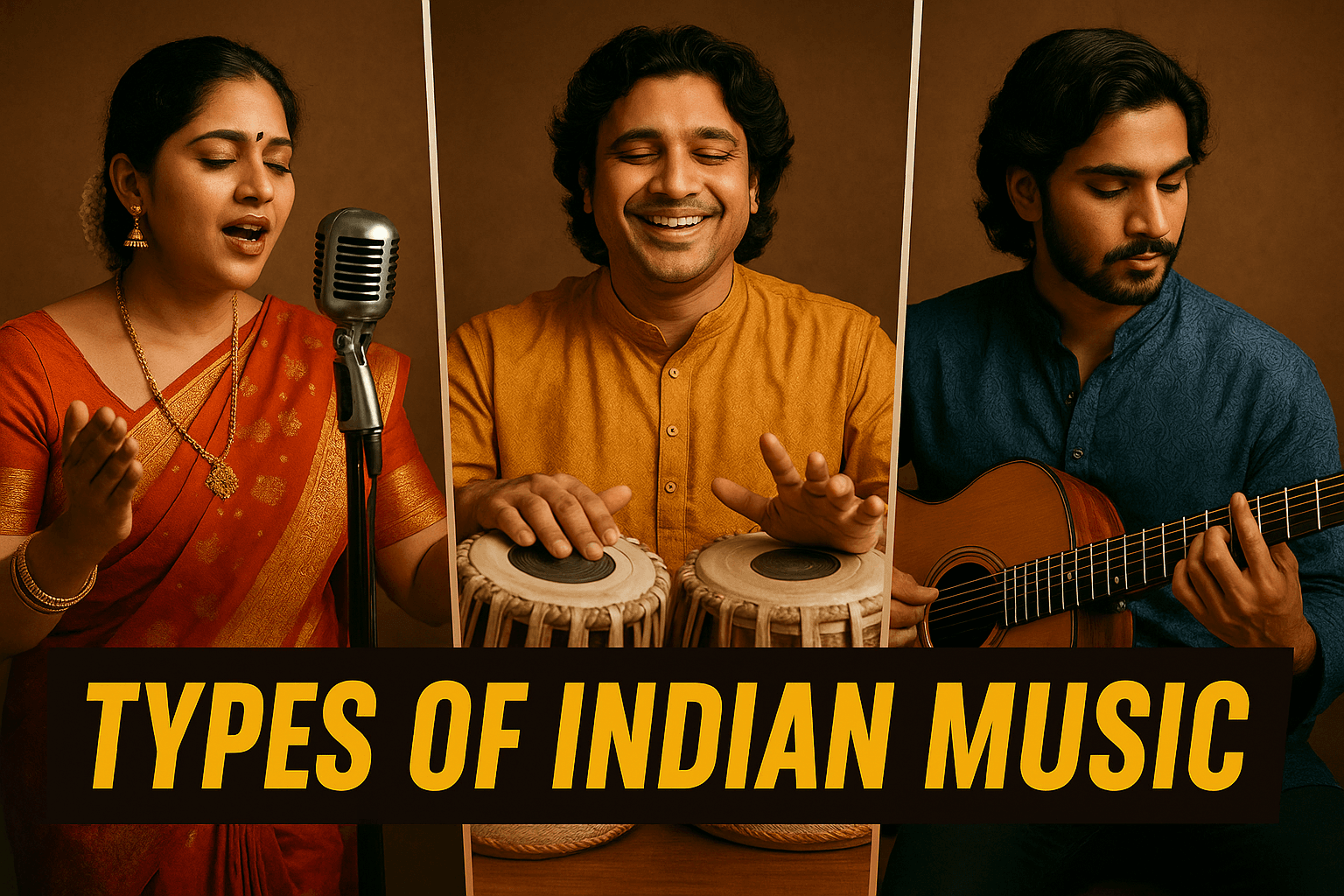
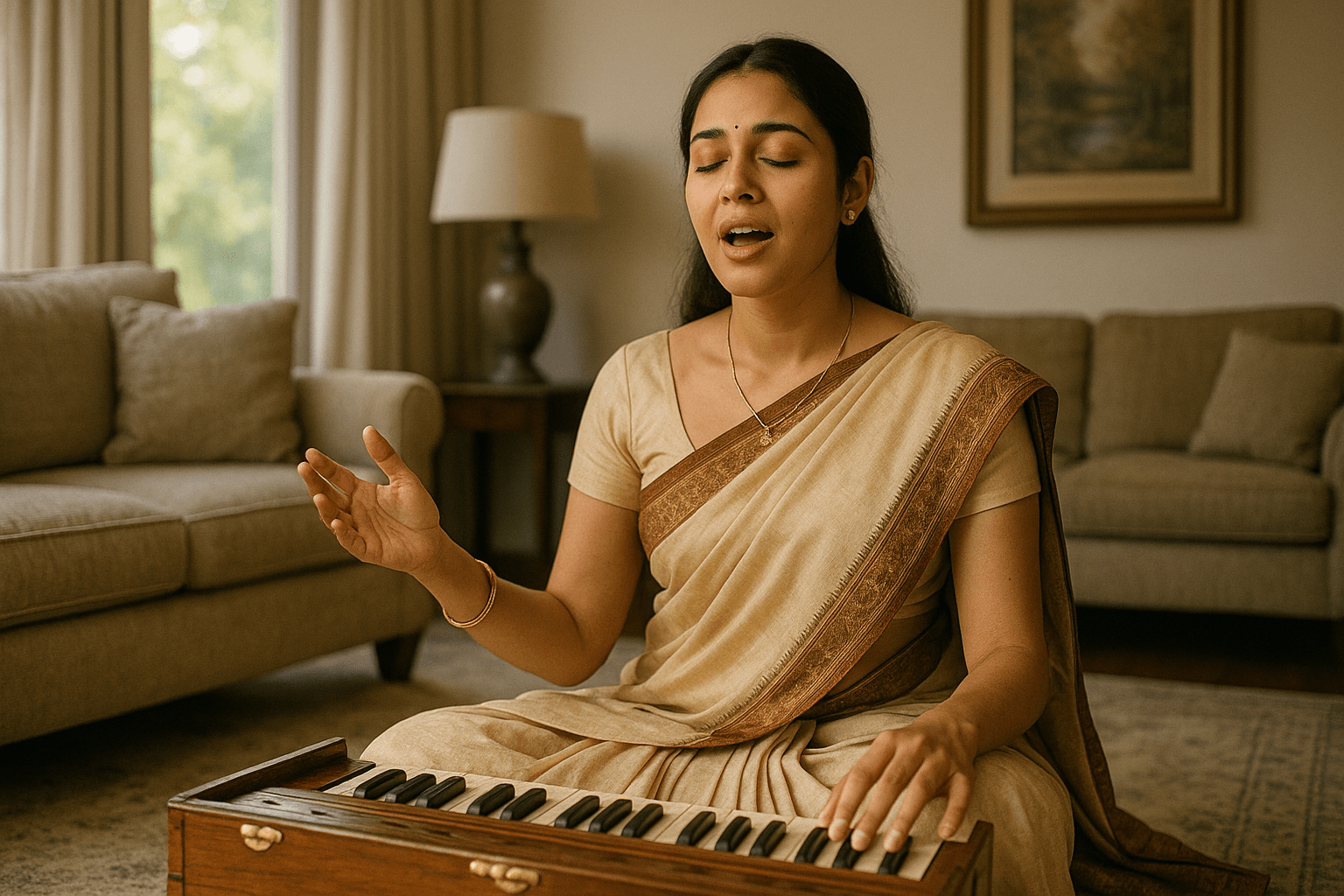
Have you ever wondered why certain melodies instantly stir your emotions or why some ragas seem to mirror your mood so perfectly? That’s the magic of Hindustani Music, a cornerstone of Indian Classical Music that has enchanted listeners for centuries.
Rooted in the northern regions of India, Hindustani Classical Music is much more than a performance—it's an immersive journey through sound, spirituality, and storytelling. Developed over thousands of years and shaped by diverse influences including Persian and Mughal traditions, it remains a living, evolving art form.
Unlike Western classical music, which is heavily notated, Hindustani music thrives on improvisation, making each performance a unique experience. Its structure is based on:
When you think of Hindustani music, you probably picture a sitar gently singing or a tabla keeping time with crisp clarity. Some key instruments include:
Each instrument plays a crucial role in conveying the depth and dynamics of a raga.
Curious about learning this majestic art form yourself? With platforms like Art Gharana’s Online Hindustani Vocal Classes, you can now experience the legacy of Indian music from the comfort of your home. Whether you're a beginner or have prior experience, these vocal lessons are designed to build a strong foundation while encouraging creative exploration.
Want to test the waters first? Book a free trial class and discover your musical potential.
In today’s fast-paced digital world, Hindustani music offers something rare—stillness, depth, and emotional connection. It trains not just your voice or hands, but your ears, patience, and perception. Whether you're an aspiring singer, a curious listener, or someone exploring music education, understanding Hindustani classical music is a gateway to India’s profound artistic heritage.
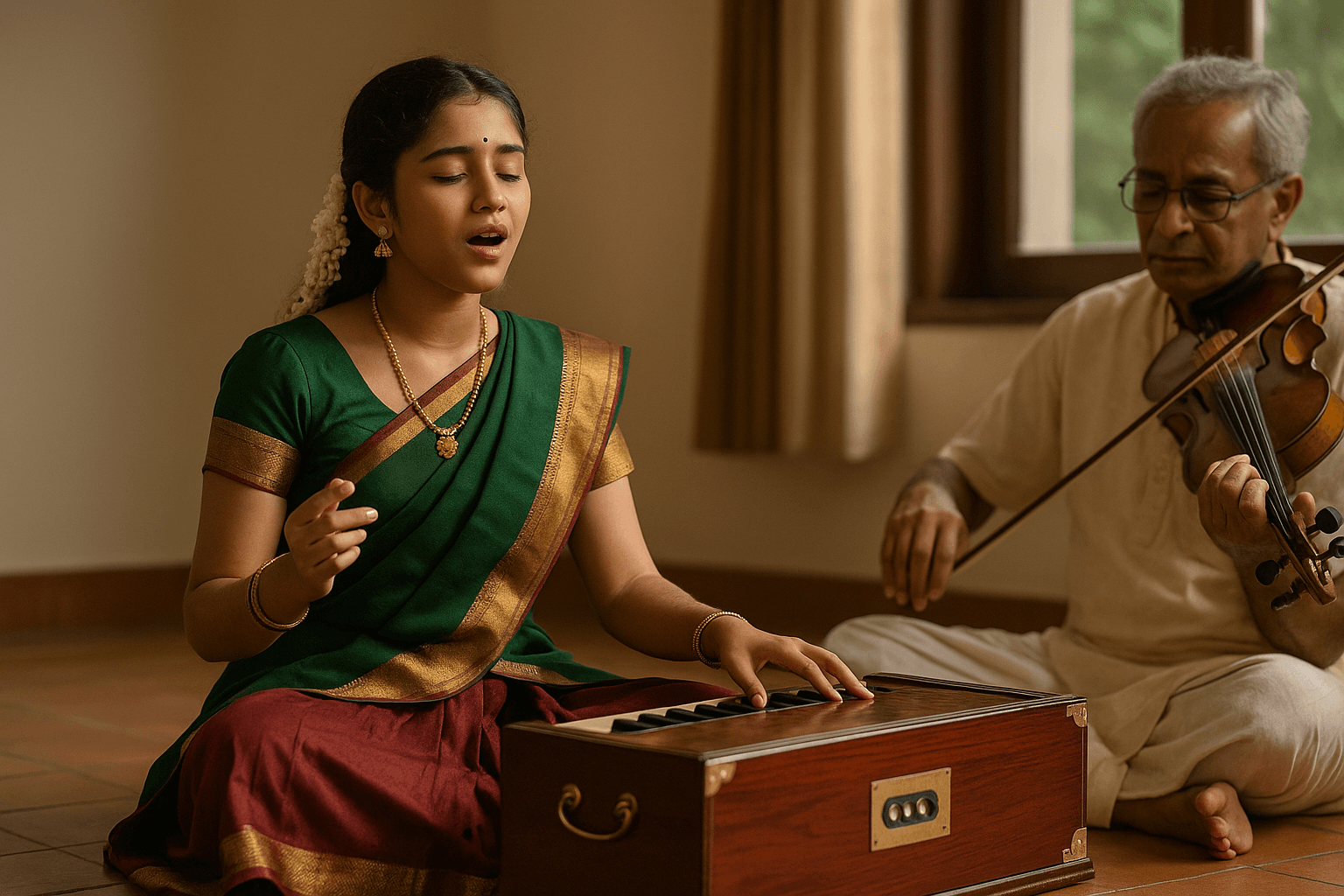
Have you ever listened to a vocal performance that felt like a divine conversation? That’s the essence of Carnatic Music—a highly intricate yet spiritually rich form of Indian Classical Music that thrives in the southern states of India.
While Hindustani music invites improvisation and mood-based exploration, Carnatic music is a celebration of structure, devotion, and discipline. It’s less about spontaneity and more about precision and depth, all while being profoundly expressive.
Carnatic music is deeply rooted in Bhakti (devotion) and is often performed in temples, festivals, and intimate concerts. Its framework includes:
The beauty of Carnatic music lies in how it balances complexity with spiritual simplicity.
Vocal-Centric Tradition: Most Carnatic compositions are designed for vocal performance, making vocal lessons an essential entry point.
Call-and-Response Style: The interaction between the vocalist and accompanying instruments is engaging and dynamic.
Revered Composers: Saints like Tyagaraja, Muthuswami Dikshitar, and Syama Sastri have composed thousands of kritis that are still performed today.
These instruments are not just add-ons—they enhance the emotional depth and technical brilliance of each composition.
Eager to dive into this soul-stirring tradition? You can start your journey with Art Gharana’s Online Carnatic Vocal Classes. Designed for both beginners and seasoned enthusiasts, these classes offer a structured path to mastering the Carnatic form—right from your home.
Still unsure? You can book a free trial class and see how it feels to sing your first kriti.
In an era of fast content and fleeting attention, Carnatic Music stands out for its timelessness. It builds discipline, enhances your listening skills, and offers a meditative experience through music. Whether you’re looking to deepen your understanding of Indian music or pursue a lifelong passion, learning Carnatic music can be a transformative step.
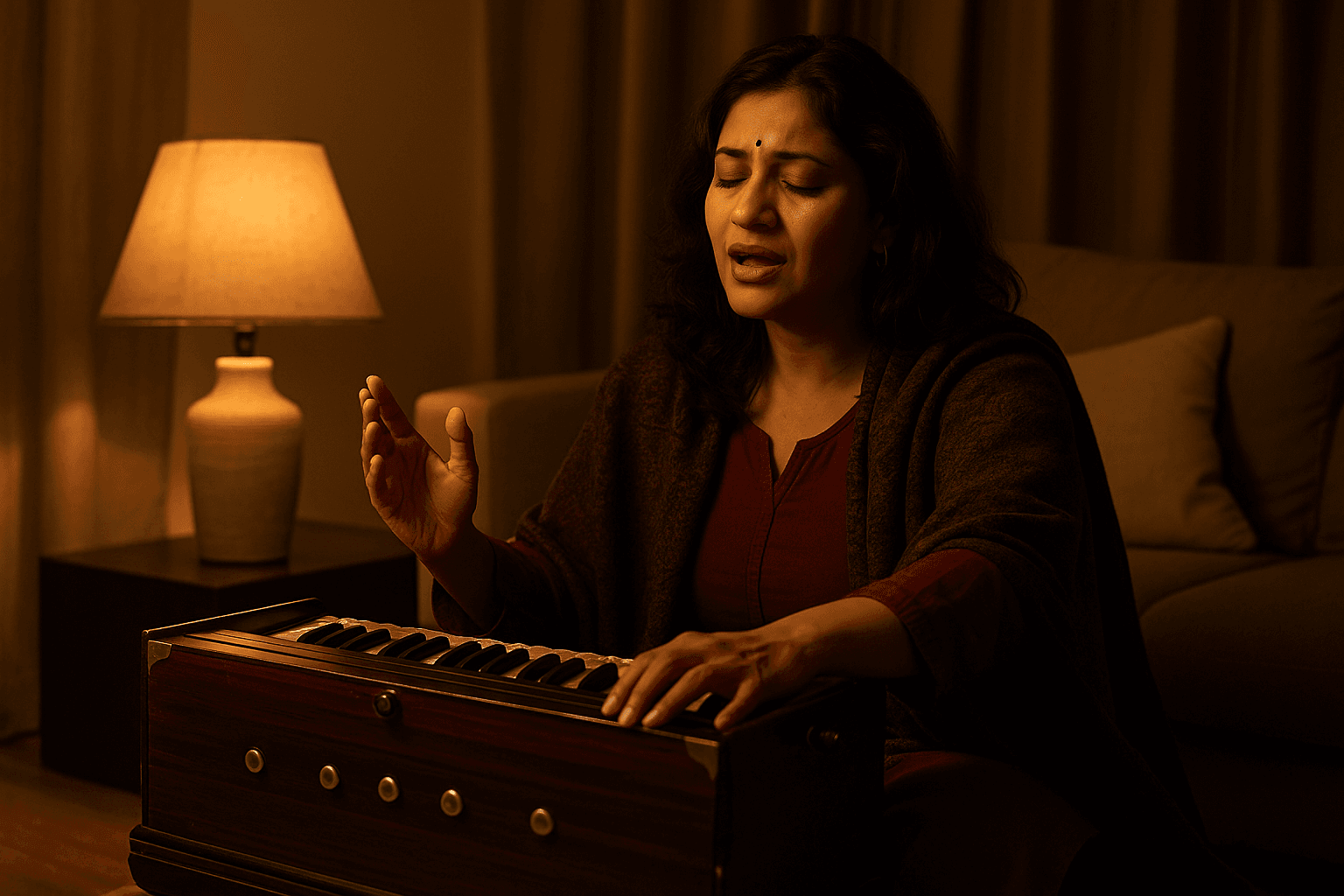
What if you could experience the soul of classical music without diving into its intricate depths right away? That’s the beauty of Light Classical Music—a genre that blends the emotional richness of Hindustani and Carnatic traditions with a more accessible, listener-friendly approach.
Whether you're just beginning your musical journey or exploring new genres as a seasoned enthusiast, light classical forms offer the perfect bridge between structured classical training and expressive, lyrical performance.
Light classical music draws inspiration from classical ragas but adapts them into formats that are easier to grasp and enjoy. It strips down some of the complexity while retaining the essence of Indian classical styles.
Popular light classical forms include:
These genres are often lyrical, emotionally resonant, and ideal for vocalists who want to convey stories and sentiments through song.
You might ask—why not go straight to full classical training? Well, light classical forms serve several key purposes:
For students of music education, light classical can act as a stepping stone before moving into deeper classical territory.
Start Learning Through Online Vocal or Instrument Lessons
Interested in expressing emotion through music without the pressure of strict classical discipline? Light classical music is an excellent place to start.
You can explore various styles through vocal lessons and instrument classes offered by Art Gharana. Their experienced mentors guide you in understanding both the musicality and mood of each composition—whether it's a soulful ghazal or a vibrant bhajan.
Try before you commit? You can always book a free trial class to explore your interest in light classical genres.
Where Tradition Meets Modern Taste
Today, light classical music isn’t just confined to the stage or temples—it’s found in movies, TV shows, and even contemporary albums. Many legendary artists like Shubha Mudgal have kept these traditions alive while bringing them to modern audiences.
So if you’re looking to experience the emotional core of Indian classical music without being overwhelmed by its complexity, light classical might just be your perfect match.
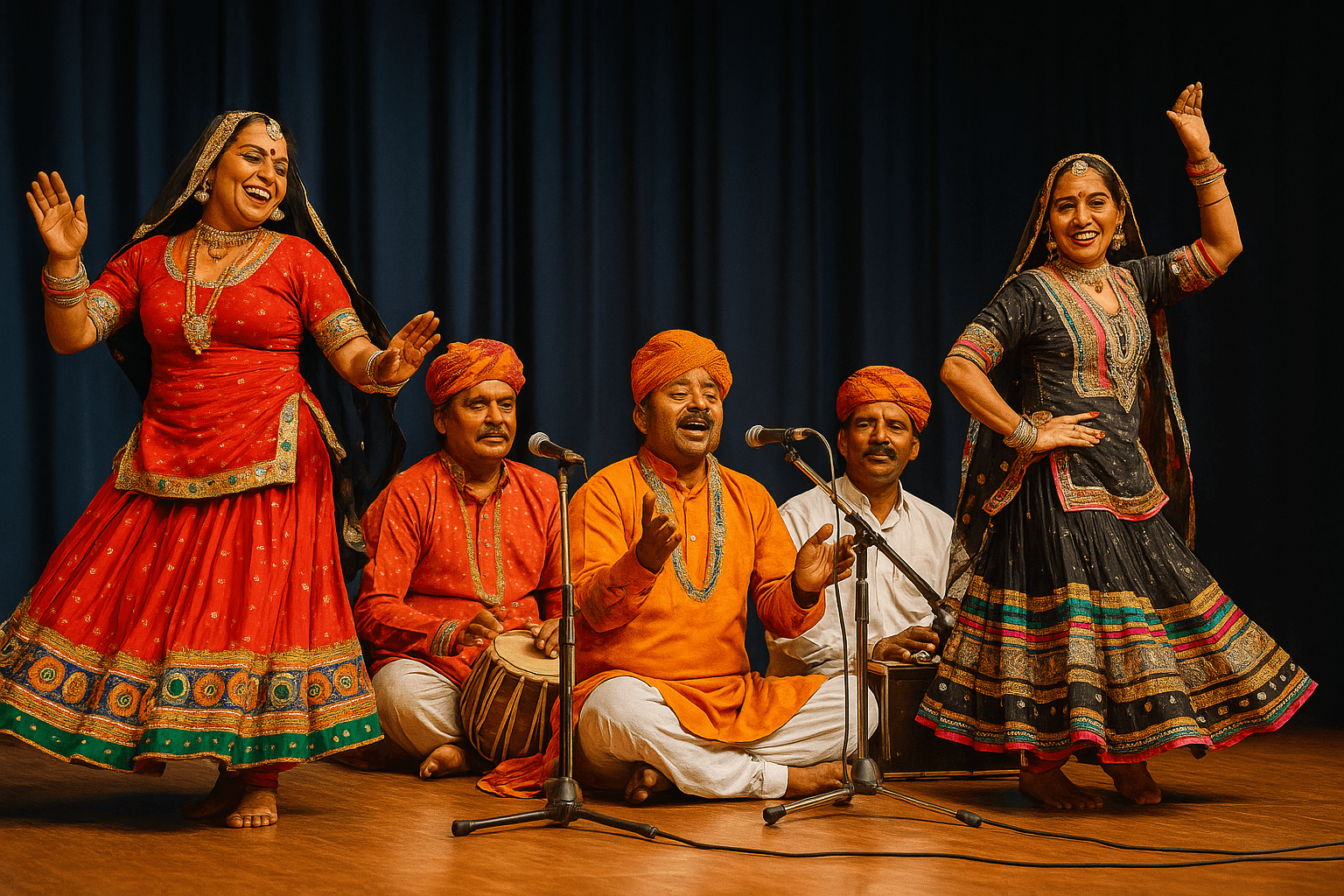
Have you ever felt the urge to dance to lively beats at a festival or been moved by a simple, heartfelt song that tells a community’s story? That’s the magic of Folk Music—the vibrant, earthy heartbeat of India’s diverse cultures and traditions.
Unlike the structured world of classical music, folk music is raw, spontaneous, and deeply connected to everyday life. It’s the soundtrack of festivals, rituals, celebrations, and sometimes even the hard work of daily living.
Folk music varies dramatically from region to region, reflecting local dialects, customs, and histories. It’s more than entertainment; it’s a living archive of India’s cultural heritage.
Here’s what makes folk music unique:
Each of these forms invites you to experience a different facet of Indian life, from the deserts of Rajasthan to the lush fields of Bengal.
What makes folk music so enduring is its ability to evolve while staying true to its roots. It keeps communities connected, preserves cultural identities, and continuously inspires artists worldwide.
So, whether you’re a music lover or a curious learner, exploring Indian folk music opens a world full of color, rhythm, and timeless stories.
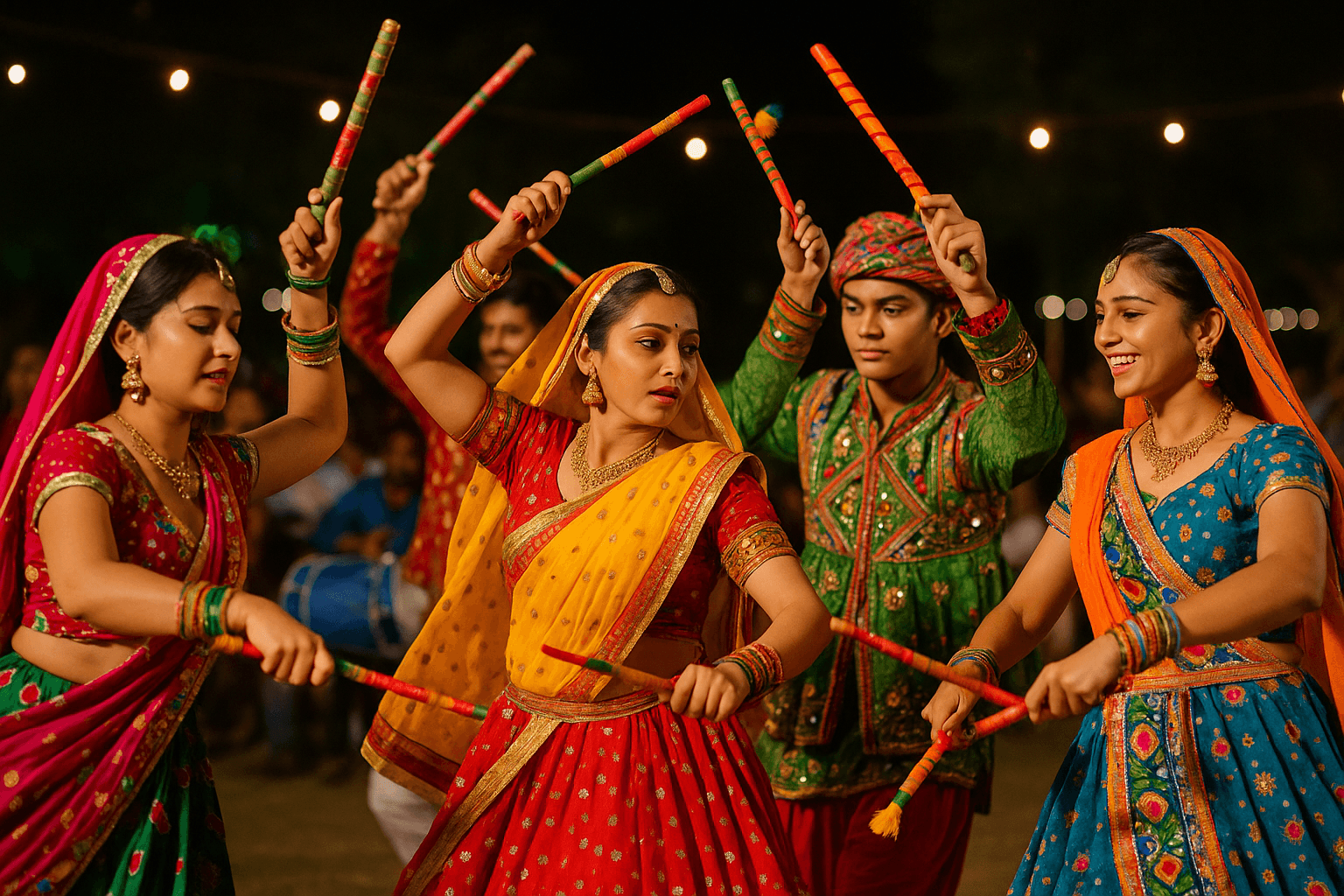
Have you ever experienced the infectious energy of Dandiya, also known as Raas? This lively folk dance from Gujarat is more than just a traditional celebration—it’s a vibrant expression of community, rhythm, and joy that has captured hearts far beyond its regional roots.
Dandiya isn’t just about dancing; it’s about connecting with culture through movement and music. Here’s what makes it stand out:
At the heart of this dance is vibrant folk music that features:
If you’re drawn to Indian folk music, Dandiya offers:
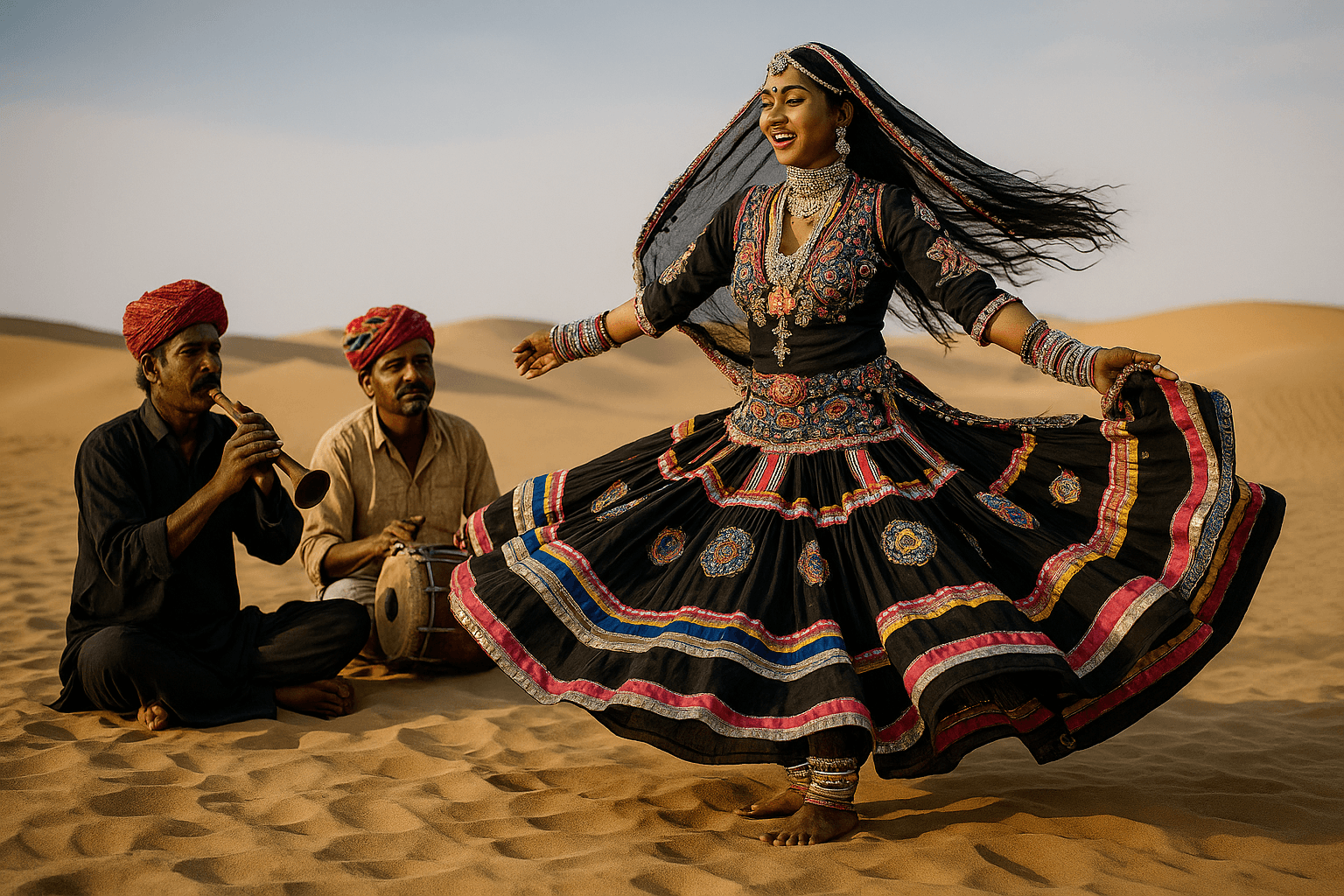
Have you ever been captivated by music that feels like a story woven through every note? Kalbelia music from Rajasthan offers exactly that—a vibrant and soulful expression of the nomadic Kalbelia community, renowned for their mesmerizing dance and enchanting melodies.
Kalbelia music is deeply rooted in folk traditions and is characterized by:
If you love folk music that tells stories through vibrant rhythms and soulful singing, Kalbelia music offers:
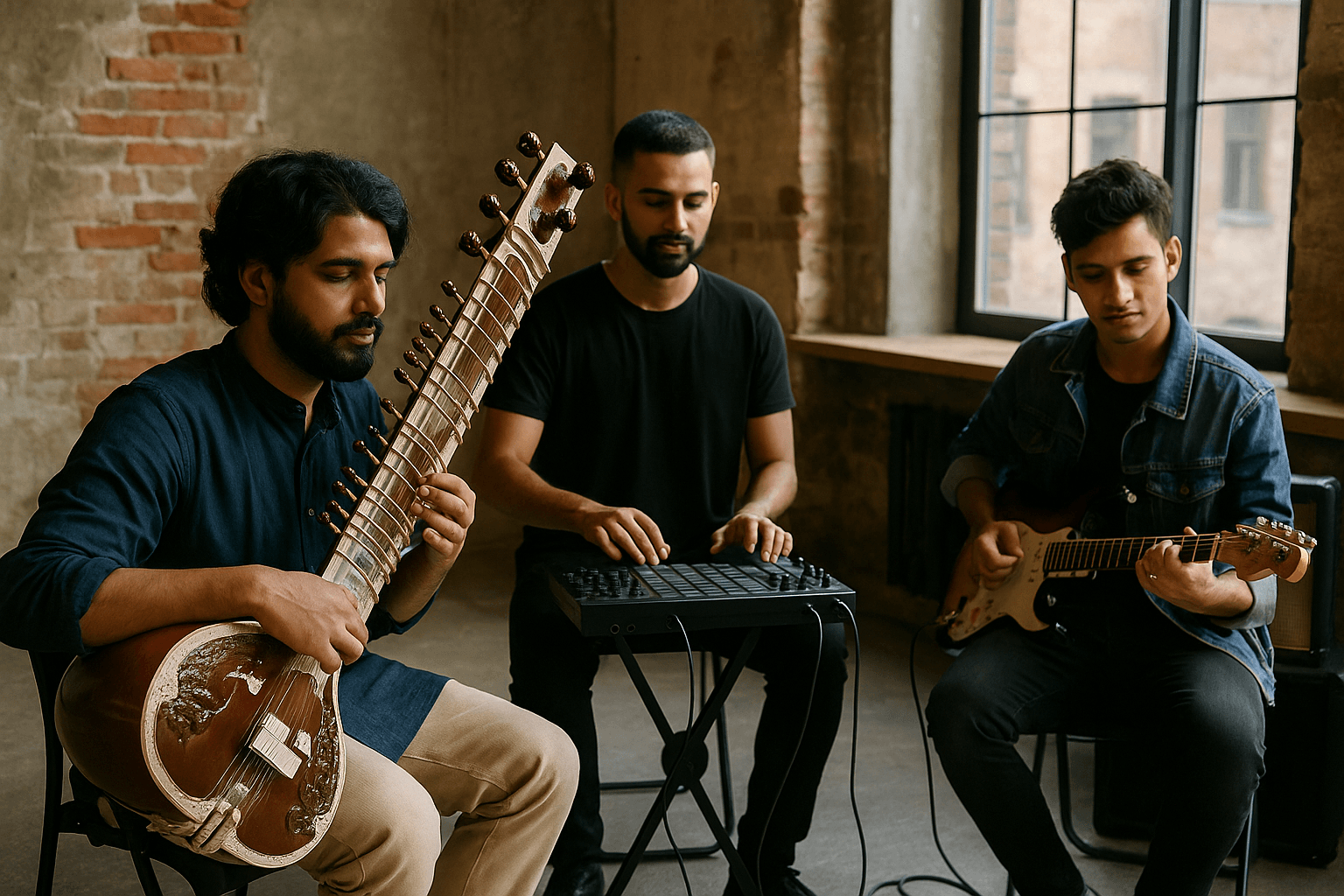
Have you noticed how Indian music today effortlessly blends ancient rhythms with contemporary beats? This exciting fusion is what defines Indian Pop Music—a genre that creatively merges traditional Indian sounds with global influences like rock, hip-hop, and electronic music.
Whether you're tapping your foot to a catchy Bollywood track or discovering independent artists experimenting with classical ragas and western styles, Indian pop offers a dynamic and accessible way to enjoy the rich tapestry of Indian music.
Indian Pop Music stands out because it:
One fascinating sub-genre that highlights this fusion is Raga Rock—rock music inspired by Indian classical ragas. It’s a thrilling example of East meeting West in musical harmony.
If you’re passionate about both tradition and innovation, Indian pop music is a playground for creativity. It offers:
Ready to dip your toes into this vibrant musical world? Check out online instrument classes where you can learn classical instruments that are often fused into pop tracks or take vocal lessons to hone your versatile singing style.
Curious to try? Book a free trial class and start blending tradition with your unique modern flair.
Indian pop music exemplifies how music evolves while honoring its roots. It invites everyone—whether a casual listener or an aspiring musician—to connect with India's rich musical heritage through a fresh, exciting lens.
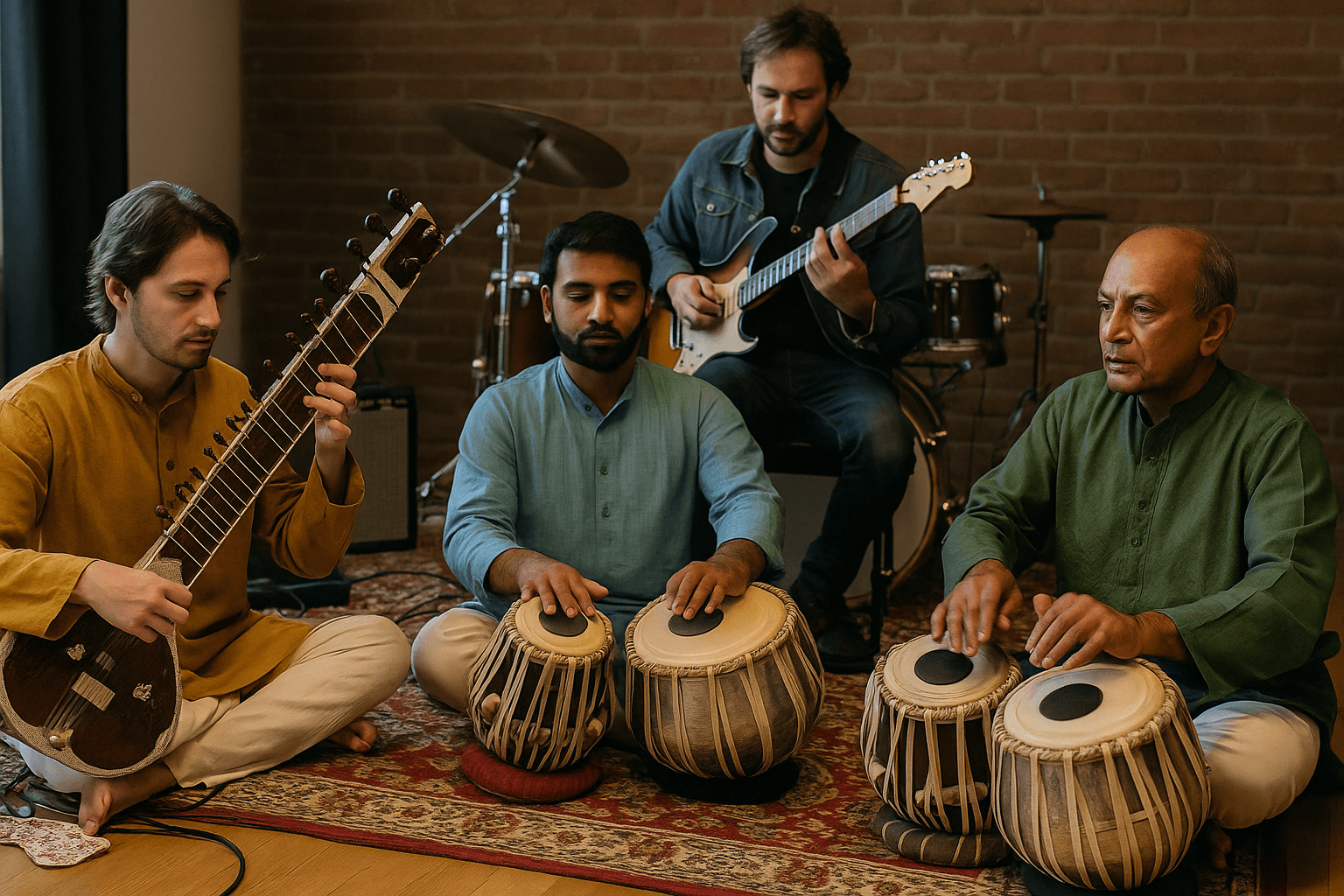
Have you ever wondered what happens when the intricate melodies of Indian classical music meet the electric energy of rock? Enter Raga Rock — a fascinating musical fusion that blends the best of both worlds, creating a soundscape that’s rich, vibrant, and truly unique.
Raga Rock emerged in the late 1960s when Western musicians began experimenting with Indian instruments like the sitar and tabla, alongside traditional rock setups. This genre:
If you’re fascinated by musical innovation or simply love both Indian classical and rock music, Raga Rock offers:
As we’ve journeyed through the vibrant landscape of Indian music—from the timeless depths of classical music to the energetic beats of folk music and the innovative spirit of Raga Rock—have you discovered which style resonates with you the most? Whether you're eager to explore Hindustani vocal lessons, master an instrument, or simply deepen your appreciation, there’s a rich world waiting for you. Why not take the next step with online music classes and experience the joy of learning firsthand? Your musical journey is just a click away—are you ready to embrace it?